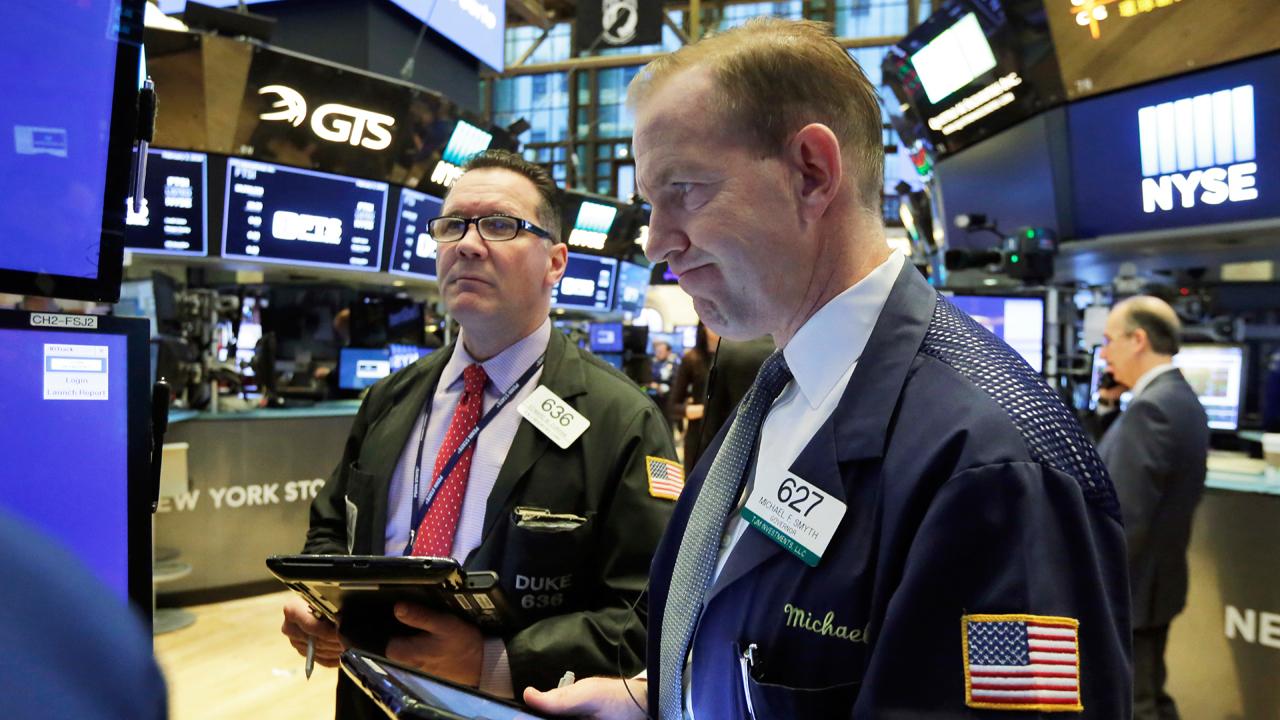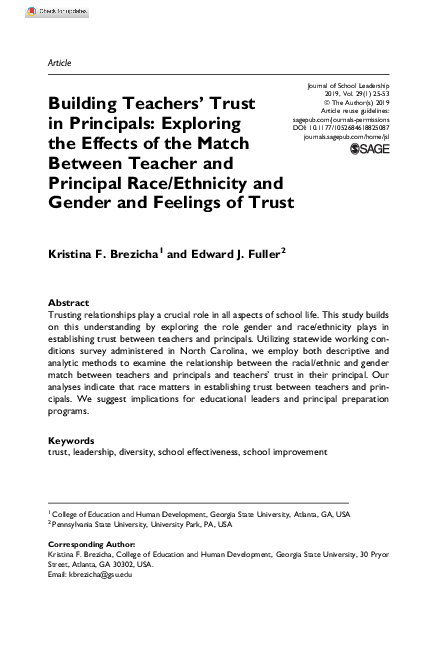Who Blinked First? Resolving The US-China Trade Standoff

Table of Contents
The Escalation: A Timeline of Tariffs and Retaliation
The US-China trade war didn't erupt overnight. It was a gradual escalation of trade restrictions and retaliatory tariffs. The timeline reveals a pattern of tit-for-tat actions, each side responding to the other's moves with increasingly aggressive measures. This tariff escalation significantly impacted global trade and fueled uncertainty in the markets.
- Early 2018: The Trump administration began imposing tariffs on various imported goods from China, citing unfair trade practices and intellectual property theft. These initial tariffs targeted solar panels and washing machines.
- July 2018: China retaliated with its own tariffs on US agricultural products, significantly impacting American farmers. This marked a significant turning point, escalating the trade war beyond initial skirmishes.
- September 2018: The US imposed further tariffs on a wide range of Chinese goods, prompting another round of retaliatory tariffs from China. This back-and-forth continued for months.
- 2018-2019: The trade war intensified, with both sides imposing tariffs on billions of dollars worth of goods. This period saw significant volatility in global financial markets as investors reacted to the uncertainty.
- Phase One Deal (2020): A "Phase One" trade deal was reached, offering a temporary truce. This signified a key moment where both sides began to de-escalate the trade war but didn't completely resolve it.
The period of tariff escalation and retaliatory tariffs, characterized by the use of trade restrictions, created a volatile and unpredictable environment for businesses and consumers globally. Understanding this trade war timeline is crucial to analyzing the concessions that ultimately brought a degree of resolution.
US Strategies: From "America First" to Negotiation
The Trump administration's "America First" policy was a central driver of the US's approach to the trade war. This policy prioritized American interests, often at the expense of international cooperation. The use of economic pressure, through tariffs and trade restrictions, was a core element of this strategy. The aim was to force China to make concessions on issues such as intellectual property protection and trade imbalances.
- Aggressive Tariff Imposition: The US employed a strategy of imposing tariffs on a wide range of Chinese goods, hoping to leverage economic pressure to achieve its goals.
- Negotiation Tactics: While initially aggressive, the US also engaged in negotiations, though these were often characterized by tense exchanges and threats. Robert Lighthizer, the US Trade Representative, played a key role in these negotiations.
- Limited Concessions: The US did make some concessions in the "Phase One" deal, but these were viewed by many as a necessary step to de-escalate the situation and avoid further economic damage.
The “America First” approach, while aiming to strengthen the US economy, ultimately led to a trade war that impacted businesses and consumers in both countries. The US trade policy during this period showed both aggressive protectionism and a willingness to engage in negotiations when strategic.
China's Response: Defense and Counter-Offensives
China responded to the US tariffs with a combination of defensive and offensive strategies. The focus was on mitigating the economic impact of the trade war while also trying to pressure the US to change course. This involved significant support for domestic industries and efforts to diversify trade partnerships.
- Retaliatory Tariffs: China imposed its own tariffs on US goods, mirroring the US's actions. These tariffs targeted a range of American exports, including agricultural products, which significantly hurt American farmers.
- Domestic Support: China also implemented policies to support its domestic industries, helping them to withstand the impact of the trade war. This support included subsidies and other measures to enhance competitiveness.
- Diversification of Trade: China also sought to diversify its trade relationships, reducing its reliance on the US market and exploring new opportunities in other countries.
China’s trade policy during the standoff revealed a strategic focus on self-reliance and the development of alternative global partnerships. Their economic countermeasures aimed at minimizing damage and pressuring the US for a resolution.
Identifying the "Blink": Analyzing Concessions and Compromises
Determining who "blinked" first in the US-China trade standoff is complex. Neither side explicitly conceded defeat. Instead, both made compromises to de-escalate the conflict. The "Phase One" deal is a clear example of a significant concession from both sides.
- US Concessions: The US scaled back some tariffs and agreed to purchase more agricultural goods from China.
- China Concessions: China committed to increased purchases of US goods and services and made some adjustments related to intellectual property protections.
The economic and political factors that influenced these concessions included the growing costs of the trade war for both countries and the need to maintain some level of stability in global markets. Defining a "blink" is subjective: it could be interpreted as a specific policy change, a shift in negotiating positions, or a change in rhetoric. But the "Phase One" deal signified a critical turning point, showing a shared recognition of the need for de-escalation.
Conclusion: Lessons from the US-China Trade Standoff – Who Really Blinked?
The US-China trade standoff was a complex and multifaceted event. Both sides employed a range of strategies – tariffs, retaliatory measures, and negotiations. The "Phase One" agreement marked a significant de-escalation, but pinpointing who "blinked" first is challenging. While the US initiated the trade war with tariffs, China's responses were equally aggressive. Ultimately, both sides made significant concessions, demonstrating a shared recognition of the damaging consequences of an extended trade conflict. The long-term implications of this standoff highlight the importance of stable trade relations and the need for ongoing dialogue and cooperation to resolve economic disputes.
Understanding the complexities of the US-China trade standoff requires further investigation. Continue your research to gain a deeper understanding of this crucial aspect of global economics by exploring resources on US-China trade relations, trade war analysis, and international trade agreements.

Featured Posts
-
 La Lnh Et La Decentralisation De Son Repechage Bilan Et Perspectives
May 15, 2025
La Lnh Et La Decentralisation De Son Repechage Bilan Et Perspectives
May 15, 2025 -
 Where To Watch San Diego Padres Games Without Cable In 2025
May 15, 2025
Where To Watch San Diego Padres Games Without Cable In 2025
May 15, 2025 -
 Verhandlungen Nach Schlichtung Drohen Bvg Streiks Und Entlassungen
May 15, 2025
Verhandlungen Nach Schlichtung Drohen Bvg Streiks Und Entlassungen
May 15, 2025 -
 Bim Aktueel Ueruen Katalogu 25 26 Subat Indirimli Ueruenler
May 15, 2025
Bim Aktueel Ueruen Katalogu 25 26 Subat Indirimli Ueruenler
May 15, 2025 -
 Effectieve Strategieen Tegen Grensoverschrijdend Gedrag Bij De Nederlandse Publieke Omroep Npo
May 15, 2025
Effectieve Strategieen Tegen Grensoverschrijdend Gedrag Bij De Nederlandse Publieke Omroep Npo
May 15, 2025
Latest Posts
-
 Pulaski County Boil Water Order Update And Information
May 15, 2025
Pulaski County Boil Water Order Update And Information
May 15, 2025 -
 Pulaski Boil Water Notice Order In Effect Until Saturday
May 15, 2025
Pulaski Boil Water Notice Order In Effect Until Saturday
May 15, 2025 -
 Pulaski Residents Under Boil Water Advisory Until Saturday
May 15, 2025
Pulaski Residents Under Boil Water Advisory Until Saturday
May 15, 2025 -
 Evanston Tap Water Exploring The Impact Of Gender Race And Personal History On Trust
May 15, 2025
Evanston Tap Water Exploring The Impact Of Gender Race And Personal History On Trust
May 15, 2025 -
 Trust In Evanston Tap Water How Gender Race And Past Experiences Shape Perceptions
May 15, 2025
Trust In Evanston Tap Water How Gender Race And Past Experiences Shape Perceptions
May 15, 2025
